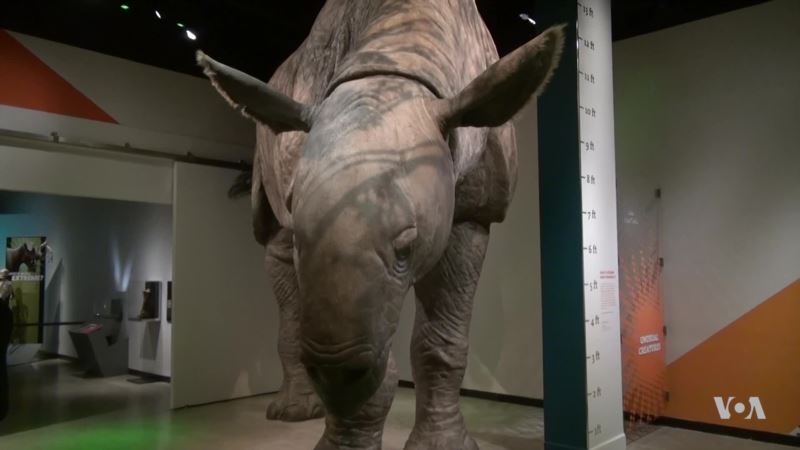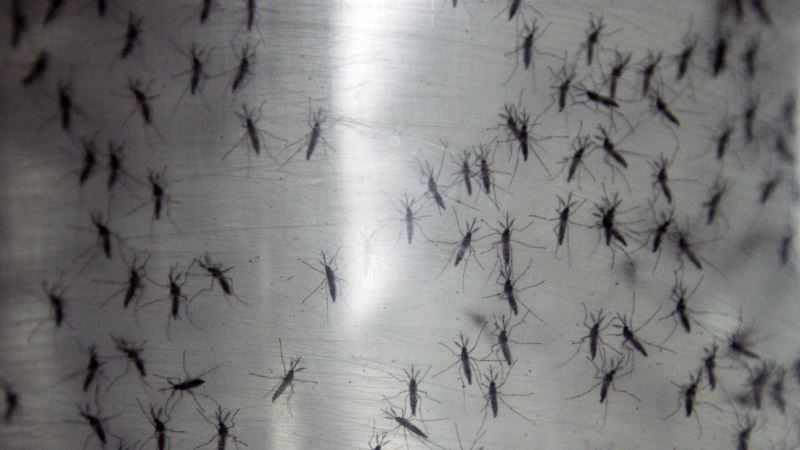A giant rhinoceros the size of three African elephants once grazed on treetops in Tibet, but succumbed to climate change more than 20 million years ago. The high treetops disappeared, along with its food source, says Xiaohong Wang of the Natural History Museum of Los Angeles County. Wang has done field research on the long-legged rhino, more formally called the Indricotherium, one of the stars of a new exhibit that shows how radical adaptations that aid survival in one setting can spell disaster in another. Through fossils and reconstructions, the exhibit tells the story of Mother Nature’s radical gambits to keep organisms alive in changing conditions. The show was built around an earlier exhibit from the American Museum of Natural History in New York, which also included ice age remains from the La Brea Tar Pits in Los Angeles. Mammals that have adapted in the extreme include an ancient whale that walked on land and more recent pygmy mammoths on California’s Channel Islands, whose small size is illustrated with side-by-side jaw bones of a Columbian mammoth and its pygmy relative, which shrunk to cope with limited food resources on the islands. Many species challenged Climatic variations over the ages and the more recent incursion of humans have challenged many species, said Emily Lindsey of the La Brea Tar Pits, a site rich with fossils from the mammoths and giant cats that once roamed California, but died out more than 10,000 years ago. Seen in the exhibit are the extinct American lion, “which along with the cave lion in Europe was the biggest cat that ever lived,” Lindsey said. There are fossils from a scimitar cat, also extinct, and a long-gone subspecies of jaguar. “And then we have the mountain lion, which is the only one of those five big cats that’s still alive today,” she notes. Also known as the cougar, panther or puma, the species is represented with a photo of a celebrated cat that continues to roam through the hills above Los Angeles. “People thought he would just spend a couple of days there, then continue to move on or attempt to move on,” said Miguel Ordenana, who coordinates the amateur citizens scientists who make wildlife observations to help scientists better understand the region. Mountain lions, he said, typically do not survive crossing busy freeways, but this intrepid mountain lion is a survivor, as is his species. Arctic island was once like Florida Other mammals in the exhibit include the Batodonoides, a long-extinct shrewlike mammal from 50 million years ago so tiny that it could have perched on a pencil. The South American Macrauchenia, with a camellike body and giraffelike neck, had a flexible trunk, like an elephant. It went extinct a mere 10,000 years ago, but is represented here in a reconstruction. Earth’s extreme changes can be seen in a diorama of Ellesmere Island in the Arctic. Just 1,000 kilometers from the North Pole, it was home to warm swamps 50 million years ago and a host of animals adapted to a Floridalike climate. Those intense changes served many species well, but presented extreme problems. Especially as environmental conditions caused the Arctic freeze over, leaving Ellesmere Island one of the coldest and driest locations on Earth.
Exhibit Illustrates Extreme Adaptations of Mammals Over Millennia






